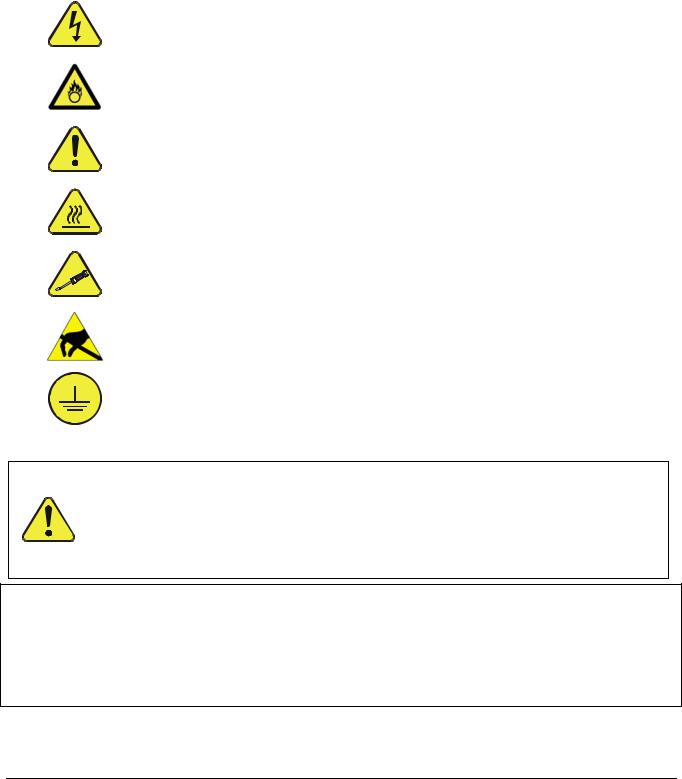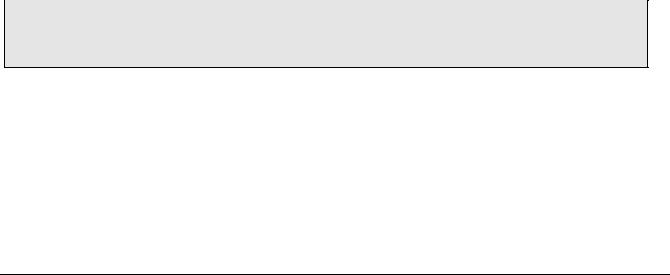Teledyne M300EM, M300E User Manual

Operation Manual
MODEL 300E FAMILY
CARBON MONOXIDE ANALYZERS
(Includes M300E, M300EM)
© TELEDYNE ADVANCED POLLUTION INSTRUMENTATION
9480 CARROLL PARK DRIVE
SAN DIEGO, CA 92121-5201
USA
Toll-free Phone: 800-324-5190
Phone: 858-657-9800
Fax: 858-657-9816
Email: api-sales@teledyne.com
Website: http://www.teledyne-api.com/
Copyright 2008-2011 |
04288D DCN 5752 |
Teledyne Advanced Pollution Instrumentation |
24 June 2011 |

Teledyne API –Operation Manual - Model 300E Family CO Analyzers |
Safety Messages |
SAFETY MESSAGES
Warning and cautionary messages are provided for the purpose of avoiding risk of personal injury or instrument damage. These important safety messages and associated safety alert symbols are found throughout this manual; the safety symbols are also located inside the instrument(s). It is imperative that you pay close attention to these messages, the descriptions of which are as follows:
WARNING: Electrical Shock Hazard
HAZARD: Strong oxidizer
GENERAL WARNING/CAUTION: Read the accompanying message for specific information.
CAUTION: Hot Surface Warning
Technician Symbol: All operations marked with this symbol are to be performed by qualified maintenance personnel only.
DO NOT TOUCH: Touching some parts of the instrument without protection or proper tools could result in damage to the part(s) and/or the instrument.
Electrical Ground: This symbol inside the instrument marks the central safety grounding point for the instrument.
CAUTION – GENERAL SAFETY HAZARD
This instrument should only be used for the purpose and in the manner described in this manual. If you use this instrument in a manner other than that for which it was intended, unpredictable behavior could ensue with possible hazardous consequences.
Never use any gas analyzer to sample combustible gas(es).
Note
Technical Assistance regarding the use and maintenance of this or any other Teledyne API product can be obtained by contacting Teledyne API’s Customer Service Department:
Telephone: 800-324-5190
Email: api-customerservice@teledyne.com
or by accessing various service options on our website at http://www.teledyne-api.com/.
04288D DCN5752 |
i |
Safety Messages |
Teledyne API – Technical Manual - Model 300E Family CO Analyzers |
This page intentionally left blank.
ii |
04288D DCN5752 |

Teledyne API –Operation Manual - Model 300E Family CO Analyzers |
Warranty |
WARRANTY
WARRANTY POLICY (02024D)
Prior to shipment, T-API equipment is thoroughly inspected and tested. Should equipment failure occur, T-API assures its customers that prompt service and support will be available.
COVERAGE
After the warranty period and throughout the equipment lifetime, T-API stands ready to provide on-site or in-plant service at reasonable rates similar to those of other manufacturers in the industry. All maintenance and the first level of field troubleshooting are to be performed by the customer.
NON-API MANUFACTURED EQUIPMENT
Equipment provided but not manufactured by T-API is warranted and will be repaired to the extent and according to the current terms and conditions of the respective equipment manufacturer’s warranty.
GENERAL
During the warranty period, T-API warrants each Product manufactured by T-API to be free from defects in material and workmanship under normal use and service. Expendable parts are excluded.
If a Product fails to conform to its specifications within the warranty period, API shall correct such defect by, in API's discretion, repairing or replacing such defective Product or refunding the purchase price of such Product.
The warranties set forth in this section shall be of no force or effect with respect to any Product: (i) that has been altered or subjected to misuse, negligence or accident, or (ii) that has been used in any manner other than in accordance with the instruction provided by T-API, or (iii) not properly maintained.
THE WARRANTIES SET FORTH IN THIS SECTION AND THE REMEDIES THEREFORE ARE EXCLUSIVE AND IN LIEU OF ANY IMPLIED WARRANTIES OF MERCHANTABILITY, FITNESS FOR PARTICULAR PURPOSE OR OTHER WARRANTY OF QUALITY, WHETHER EXPRESSED OR IMPLIED. THE REMEDIES SET FORTH IN THIS SECTION ARE THE EXCLUSIVE REMEDIES FOR BREACH OF ANY WARRANTY CONTAINED HEREIN. API SHALL NOT BE LIABLE FOR ANY INCIDENTAL OR CONSEQUENTIAL DAMAGES ARISING OUT OF OR RELATED TO THIS AGREEMENT OF T-API'S PERFORMANCE HEREUNDER, WHETHER FOR BREACH OF WARRANTY OR OTHERWISE
TERMS AND CONDITIONS
All units or components returned to Teledyne API should be properly packed for handling and returned freight prepaid to the nearest designated Service Center. After the repair, the equipment will be returned, freight prepaid.
CAUTION – Avoid Warranty Invalidation
Failure to comply with proper anti-Electro-Static Discharge (ESD) handling and packing instructions and Return Merchandise Authorization (RMA) procedures when returning parts for repair or calibration may void your warranty. For anti-ESD handling and packing instructions please refer to “Packing Components for Return to Teledyne API’s Customer Service” in the Primer on Electro-Static Discharge section of this manual, and for RMA procedures please refer to our Website at http://www.teledyne-api.com under Customer Support > Return Authorization.
04288D DCN5752 |
iii |

Teledyne API – Technical Manual - Model 300E Family CO Analyzers
This page intentionally left blank.
iv |
04288D DCN5752 |

Teledyne API –Operation Manual - Model 300E Family CO Analyzers |
About This Manual |
ABOUT THIS MANUAL
This manual is comprised of multiple documents, in PDF format, as listed below.
Part No. |
Rev |
Name/Description |
|
|
|
04288 |
D |
M300E/EM Manual |
|
|
|
04906 |
H |
Menu Tree and Software Documentation, L.8 (as Appendix A of this manual) |
|
|
|
05362 |
J |
Spare Parts List, M300E (in Appendix B of this manual) |
|
|
|
05424 |
H |
Spare Parts List, M300EM (in Appendix B of this manual) |
|
|
|
04302 |
Q |
Recommended Spares Stocking Levels, M300E (in Appendix B of this manual) |
|
|
|
04834 |
G |
Recommended Spares Stocking Levels, M300EM (in Appendix B of this manual) |
|
|
|
009600400 |
C |
Expendables Kit, M300E/M300EM (in Appendix B of this manual) |
|
|
|
040360100 |
A |
Spares Kit, M300E/M300EM (1 unit) (in Appendix B of this manual) |
|
|
|
04305 |
G |
Warranty/Repair Request Questionnaire (as Appendix C of this manual) |
|
|
|
03297 |
K |
PCA, 03296, IR Photodetector Preamp and Sync Demodulator (In Appendix D of this manual) |
|
|
|
03632 |
A |
PCA, 03631, 0-20mA driver (in Appendix D of this manual) |
|
|
|
03976 |
B |
PCA, 03975, Keyboard & Display Driver (in Appendix D of this manual) |
|
|
|
04354 |
D |
Schematic, PCA 04003, Press/Flow (in Appendix D of this manual) |
|
|
|
05703 |
A |
PCA, 05702, Motherboard, E-Series Gen 4 (in Appendix D of this manual) |
|
|
|
04089 |
A |
PCA, 04088, Opto Pickup Interface (in Appendix D of this manual) |
|
|
|
04136 |
B |
PCA, 04135 Rev A, M300E Relay (in Appendix D of this manual) |
|
|
|
04216 |
E |
Interconnect Drawing - M300E SNs >=100 (in Appendix D of this manual) |
|
|
|
04217 |
F |
Interconnect List - M300E SNs >=100 (in Appendix D of this manual) |
|
|
|
04259 |
A |
PCA, 04258, Keyboard & Display Driver (in Appendix D of this manual) |
|
|
|
04468 |
B |
PCA, 04467, Analog Output Isolator, / Series Resistor (in Appendix D of this manual) |
|
|
|
NOTE
We recommend that this manual be read in its entirety before making any attempt made to operate the instrument.
04288D DCN5752 |
v |

Revision History |
Teledyne API – Technical Manual - Model 300E Family CO Analyzers |
REVISION HISTORY
2010 June 08
Document |
PN |
Rev |
DCN |
Change Summary |
M300E/M300EM Manual |
04288 |
D |
5752 |
Combined “Title” and “Text” portions of manual |
|
|
|
|
into one document for single part number. |
|
|
|
|
Created front matter content to include Safety |
|
|
|
|
Messages, Warranty, About This Manual (incl. |
|
|
|
|
manual BOM), and Revision History sections. |
|
|
|
|
Added cautionary messages to avoid invalidating |
|
|
|
|
warranty. |
|
|
|
|
Corrected bp filter descrip. from 4.3 μm to 4.7 μm |
|
|
|
|
Updated setup instructions for RS-232 multidrop |
|
|
|
|
and RS-485 communications (Sections 8.2, 8.3) |
|
|
|
|
Updated CPU description and replacement |
|
|
|
|
procedures to fit the E-series CPU. |
|
|
|
|
Updated instructions/added illustration for current |
|
|
|
|
(I) conversion configuration. |
|
|
|
|
Clarified description of the GFC operation |
|
|
|
|
(Section 1.2). |
|
|
|
|
Added Pressure Flow schematic to Appendix D. |
|
|
|
|
Added Elec Test calibration (Section 13.5.6.2). |
|
|
|
|
Clarified password behavior (Section 6.5.3). |
|
|
|
|
Added MODBUS Quick Setup instr. (Section 8.5). |
2011, June 08, M300E/M300EM Manual, PN04288 Rev D (initial capture)
For the purpose of capturing this manual’s construct at Rev D when the addition of this new Revision History section was initiated, the following list shows the current documents comprising this manual. Any future changes to this manual will be recorded in this Revision History section; the preceding About This Manual section will be updated as well.
Part No. |
Rev |
Name/Description |
|
|
|
04288 |
D |
M300E/EM Manual |
|
|
|
04906 |
H |
Menu Tree and Software Documentation, L.8 (as Appendix A of this manual) |
|
|
|
05362 |
J |
Spare Parts List, M300E (in Appendix B of this manual) |
|
|
|
05424 |
H |
Spare Parts List, M300EM (in Appendix B of this manual) |
|
|
|
04302 |
Q |
Recommended Spares Stocking Levels, M300E (in Appendix B of this manual) |
|
|
|
04834 |
G |
Recommended Spares Stocking Levels, M300EM (in Appendix B of this manual) |
|
|
|
009600400 |
C |
Expendables Kit, M300E/M300EM (in Appendix B of this manual) |
|
|
|
040360100 |
A |
Spares Kit, M300E/M300EM (1 unit) (in Appendix B of this manual) |
|
|
|
04305 |
G |
Warranty/Repair Request Questionnaire (as Appendix C of this manual) |
|
|
|
03297 |
K |
PCA, 03296, IR Photodetector Preamp and Sync Demodulator (In Appendix D of this manual) |
|
|
|
03632 |
A |
PCA, 03631, 0-20mA driver (in Appendix D of this manual) |
|
|
|
03976 |
B |
PCA, 03975, Keyboard & Display Driver (in Appendix D of this manual) |
|
|
|
04354 |
D |
Schematic, PCA 04003, Press/Flow (in Appendix D of this manual) |
|
|
|
vi |
04288D DCN5752 |

Teledyne API –Operation Manual - Model 300E Family CO Analyzers |
Revision History |
2011, June 08, M300E/M300EM Manual, PN04288 Rev D (initial capture)
05703 |
A |
PCA, 05702, Motherboard, E-Series Gen 4 (in Appendix D of this manual) |
|
|
|
04089 |
A |
PCA, 04088, Opto Pickup Interface (in Appendix D of this manual) |
|
|
|
04136 |
B |
PCA, 04135 Rev A, M300E Relay (in Appendix D of this manual) |
|
|
|
04216 |
E |
Interconnect Drawing - M300E SNs >=100 (in Appendix D of this manual) |
|
|
|
04217 |
F |
Interconnect List - M300E SNs >=100 (in Appendix D of this manual) |
|
|
|
04259 |
A |
PCA, 04258, Keyboard & Display Driver (in Appendix D of this manual) |
|
|
|
04468 |
B |
PCA, 04467, Analog Output Isolator, / Series Resistor (in Appendix D of this manual) |
|
|
|
04288D DCN5752 |
vii |
Revision History |
Teledyne API – Technical Manual - Model 300E Family CO Analyzers |
This page intentionally left blank.
viii |
04288D DCN5752 |

Teledyne API –Operation Manual - Model 300E Family CO Analyzers |
Table of Contents |
TABLE OF CONTENTS |
|
PART I – GENERAL INFORMATION .................................................................................... |
21 |
1. INTRODUCTION ................................................................................................................ |
23 |
1.1. M300E FAMILY Overview............................................................................................................................. |
23 |
1.2. Additional Documentation ............................................................................................................................. |
24 |
1.2.1. Using This Manual ................................................................................................................................. |
25 |
2. SPECIFICATIONS AND APPROVALS.............................................................................. |
27 |
2.1. Specifications ................................................................................................................................................ |
27 |
2.2. EPA Equivalency Designation ...................................................................................................................... |
28 |
2.3. TUV DESIGNATION ..................................................................................................................................... |
29 |
2.4. CE Mark Compliance .................................................................................................................................... |
29 |
2.4.1. Emissions Compliance........................................................................................................................... |
29 |
2.4.2. Safety Compliance................................................................................................................................. |
29 |
3. GETTING STARTED .......................................................................................................... |
31 |
3.1. M300E/EM Analyzer Layout ......................................................................................................................... |
31 |
3.2. Unpacking the M300E/EM Analyzer ............................................................................................................. |
37 |
3.2.1. Ventilation Clearance............................................................................................................................. |
38 |
3.3. Electrical Connections................................................................................................................................... |
38 |
3.3.1. Power Connection.................................................................................................................................. |
38 |
3.3.2. Analog Output Connections.................................................................................................................. |
39 |
3.3.3. Connecting the Status Outputs.............................................................................................................. |
39 |
3.3.4. Connecting the Control Inputs ............................................................................................................... |
41 |
3.3.5. Connecting the Serial Ports ................................................................................................................... |
42 |
3.3.6. Connecting to a LAN or the Internet ...................................................................................................... |
42 |
3.3.7. Connecting to a Multidrop Network........................................................................................................ |
42 |
3.4. Pneumatic Connections ................................................................................................................................ |
42 |
3.4.1. Calibration Gases .................................................................................................................................. |
42 |
3.4.1.1. Zero Air........................................................................................................................................... |
42 |
3.4.1.2. Span Gas........................................................................................................................................ |
43 |
3.4.2. Pneumatic Connections to M300E/EM Basic Configuration.................................................................. |
44 |
3.4.2.1. Sample Gas Source ....................................................................................................................... |
45 |
3.4.2.2. Calibration Gas Sources ................................................................................................................ |
45 |
3.4.2.3. Input Gas Venting........................................................................................................................... |
46 |
3.4.2.4. Exhaust Outlet ................................................................................................................................ |
46 |
3.5. Initial Operation ............................................................................................................................................. |
46 |
3.5.1. Startup.................................................................................................................................................... |
47 |
3.5.2. Warm Up................................................................................................................................................ |
48 |
3.5.3. Warning Messages ................................................................................................................................ |
48 |
3.5.4. Functional Check ................................................................................................................................... |
50 |
3.6. Initial Calibration of the M300E/EM............................................................................................................... |
51 |
3.6.1. Interferents for CO2 Measurements....................................................................................................... |
51 |
3.6.2. Initial Calibration Procedure for M300E/EM Analyzers without Options................................................ |
51 |
3.6.2.1. Verifying the M300E/EM Reporting Range Settings ...................................................................... |
52 |
3.6.2.2. Dilution Ratio Set Up ...................................................................................................................... |
53 |
3.6.2.3. Set CO Span Gas Concentration ................................................................................................... |
54 |
3.6.2.4. Zero/Span Calibration..................................................................................................................... |
55 |
3.6.3. O2 Sensor Calibration Procedure........................................................................................................... |
56 |
3.6.4. CO2 Sensor Calibration Procedure ........................................................................................................ |
56 |
4. FREQUENTLY ASKED QUESTIONS ................................................................................ |
57 |
4.1. FAQ’s ............................................................................................................................................................ |
57 |
4.2. Glossary ........................................................................................................................................................ |
58 |
5. OPTIONAL HARDWARE AND SOFTWARE..................................................................... |
61 |
5.1. External Pumps (OPTions 10A-10E, 11, 13) ................................................................................................ |
61 |
5.2. Rack Mount Kits (OPT 20 to OPT 23)........................................................................................................... |
61 |
04288D DCN5752 |
ix |

Table of Contents |
Teledyne API – Technical Manual - Model 300E Family CO Analyzers |
|
5.3. Carrying Strap/Handle (OPT 29) |
................................................................................................................... |
62 |
5.4. Current Loop Analog Outputs (Option ....................................................................................................41) |
62 |
|
5.4.1. Converting Current Loop Analog ...............................................Outputs to Standard Voltage Outputs |
63 |
|
5.5. Expendables and Spares Kits (Options .........................................................................................42A, 45) |
64 |
|
5.6. Calibration Valves (Options 50A, ........................................................................................50B, 50E, 50H) |
64 |
|
5.6.1. General Information Related ..................................................................................to all Valve Options |
64 |
|
5.6.1.1. Gas Flow Rate................................................................................................................................ |
|
64 |
5.6.1.2. Valve Control .................................................................................................................................. |
|
64 |
5.6.2. Zero/Span Valve (Option 50A)............................................................................................................... |
64 |
|
5.6.2.1. Internal Pneumatics (OPT .....................................................................................................50A) |
65 |
|
5.6.2.2. Pneumatic Set Up (OPT ........................................................................................................50A) |
66 |
|
5.6.2.3. Input Gas Venting........................................................................................................................... |
|
66 |
5.6.2.4. Exhaust Outlet ................................................................................................................................ |
|
66 |
5.6.3. Zero/Span/Shutoff Valve (Option ..................................................................................................50B) |
67 |
|
5.6.3.1. Internal Pneumatics (OPT .....................................................................................................50B) |
67 |
|
5.6.3.2. Pneumatic Set Up (OPT ........................................................................................................50B) |
68 |
|
5.6.4. Zero/Span Valve with Internal ....................................................................CO Scrubber (Option 50H) |
69 |
|
5.6.4.1. Internal Pneumatics (OPT .....................................................................................................50H) |
69 |
|
5.6.4.2. Pneumatic Set Up (OPT ........................................................................................................50H) |
70 |
|
5.6.5. Zero/Span/Shutoff with Internal ..........................................................Zero Air Scrubber (Option 50E) |
71 |
|
5.6.5.1. Internal Pneumatics (OPT .....................................................................................................50E) |
71 |
|
5.6.5.2. Pneumatic Set Up (OPT ........................................................................................................50E) |
72 |
|
5.7. Communication Options................................................................................................................................ |
|
73 |
5.7.1. RS-232 Modem Cable (Option ......................................................................................................60A) |
73 |
|
5.7.2. RS-232 Multidrop (Option 62)................................................................................................................ |
73 |
|
5.7.3. Ethernet (Option 63A) ............................................................................................................................ |
|
74 |
5.7.4. Ethernet + Multidrop (OPT 63C) ............................................................................................................ |
75 |
|
5.8. Second Gas Sensors .................................................................................................................................... |
|
75 |
5.8.1. Oxygen Sensor (Option 65A)................................................................................................................. |
75 |
|
5.8.1.1. Theory of Operation - Paramagnetic ..............................................................measurement of O2 |
75 |
|
5.8.1.2. Operation within the M300E/EM ......................................................................................Analyzer |
76 |
|
5.8.1.3. Pneumatic Operation of ..........................................................................................the O2 Sensor |
76 |
|
5.9. Carbon Dioxide Sensor (Option 67A) ........................................................................................................... |
77 |
|
5.9.1. CO2 Sensor Ranges and Specifications ................................................................................................ |
77 |
|
5.9.2. Theory of Operation ............................................................................................................................... |
|
77 |
5.9.2.1. NDIR measurement of ............................................................................................................CO2 |
77 |
|
5.9.2.2. Operation within the M300E/EM ......................................................................................Analyzer |
78 |
|
5.9.2.3. Pneumatic Operation of .......................................................................................the CO2 Sensor |
78 |
|
5.9.2.4. Electronic Operation of .........................................................................................the CO2 Sensor |
79 |
|
5.10. CONCENTRATION ALARM RELAY .......................................................................................(Option 61) |
80 |
|
5.11. Special Features ......................................................................................................................................... |
|
82 |
5.11.1. Dilution Ratio Option ............................................................................................................................ |
|
82 |
5.11.2. Maintenance Mode Switch................................................................................................................... |
|
82 |
5.11.3. Second Language Switch .................................................................................................................... |
|
82 |
PART II – OPERATING INSTRUCTIONS.............................................................................. |
83 |
|
6. BASIC OPERATION .......................................................................................................... |
|
85 |
6.1. Overview of Operating Modes ...................................................................................................................... |
|
85 |
6.2. Sample Mode ................................................................................................................................................ |
|
86 |
6.3. Warning Messages ....................................................................................................................................... |
|
88 |
6.4. Calibration Mode ........................................................................................................................................... |
|
89 |
6.5. Setup MODE ................................................................................................................................................. |
|
90 |
6.5.1. SETUP CFG: Configuration ...........................................................................................Information |
91 |
|
6.5.2. SETUP ACAL: Automatic ................................................................................................Calibration |
91 |
|
6.5.3. SETUP PASS: Password .....................................................................................................Feature |
92 |
|
6.5.4. SETUP CLK: Setting the .......................................................M300E/EM Analyzer’s Internal Clock |
95 |
|
6.5.4.1. Setting the internal Clock’s .....................................................................................Time and Day |
95 |
|
6.5.4.2. Adjusting the Internal Clock’s ..............................................................................................Speed |
96 |
|
x |
04288D DCN5752 |

Teledyne API –Operation Manual - Model 300E Family CO Analyzers |
Table of Contents |
|
6.6. SETUP RNGE: Analog Output Reporting Range Configuration .............................................................. |
|
97 |
6.6.1. Physical Range versus Analog Output Reporting Ranges .................................................................... |
|
97 |
6.6.2. Analog Output Ranges for CO Concentration ....................................................................................... |
|
98 |
6.6.3. Reporting Range Modes........................................................................................................................ |
|
99 |
6.6.3.1. RNGE MODE SNGL: Configuring the M300E/EM Analyzer for SINGLE Range Mode |
..... 100 |
|
6.6.3.2. RNGE MODE DUAL: Configuring the M300E/EM Analyzer for DUAL Range Mode ........ |
101 |
|
6.6.3.3. RNGE MODE AUTO: Configuring the M300E/EM Analyzer for AUTO Range Mode........ |
103 |
|
6.6.4. SETUP RNGE UNIT: Setting the Reporting Range Units of Measure ...................................... |
|
104 |
6.6.5. SETUP RNGE DIL: Using the Optional Dilution Ratio Feature .................................................. |
|
105 |
7. ADVANCED FEATURES ................................................................................................. |
|
107 |
7.1. SETUP IDAS: Using the Data Acquisition System (iDAS) .................................................................... |
|
107 |
7.1.1. IDAS Status ........................................................................................................................................ |
|
107 |
7.1.2. IDAS Structure .................................................................................................................................... |
|
108 |
7.1.2.1. iDAS Channels ............................................................................................................................ |
|
108 |
7.1.3. Default iDAS Channels ....................................................................................................................... |
|
109 |
7.1.4. SETUP DAS VIEW: Viewing iDAS Channels and Individual Records ....................................... |
|
111 |
7.1.5. SETUP DAS EDIT: Accessing the iDAS Edit Mode ................................................................... |
|
112 |
7.1.5.1. Editing iDAS Data Channel Names............................................................................................. |
|
113 |
7.1.5.2. Editing iDAS Triggering Events ................................................................................................... |
|
114 |
7.1.5.3. Editing iDAS Parameters............................................................................................................. |
|
115 |
7.1.5.4. Editing Sample Period and Report Period................................................................................... |
|
117 |
7.1.5.5. Report Periods in Progress When Instrument Is Powered Off.................................................... |
|
118 |
7.1.5.6. Editing the Number of Records ................................................................................................... |
|
119 |
7.1.5.7. RS-232 Report Function.............................................................................................................. |
|
120 |
7.1.5.8. Enabling/Disabling the HOLDOFF Feature................................................................................. |
|
121 |
7.1.5.9. The Compact Report Feature...................................................................................................... |
|
122 |
7.1.5.10. The Starting Date Feature......................................................................................................... |
|
122 |
7.1.6. Disabling/Enabling Data Channels ..................................................................................................... |
|
122 |
7.1.7. Remote iDAS Configuration................................................................................................................ |
|
123 |
7.1.7.1. iDAS Configuration Using APICOM ............................................................................................ |
|
123 |
7.1.7.2. iDAS Configuration Using Terminal Emulation Programs........................................................... |
|
124 |
7.2. SETUP MORE VARS: Internal Variables (VARS) ............................................................................ |
|
125 |
7.3. SETUP MORE DIAG: Using the Diagnostics Functions.................................................................. |
|
127 |
7.3.1. Accessing the Diagnostic Features .................................................................................................... |
|
128 |
7.4. Using the M300E/EM Analyzer’s Analog Outputs. .................................................................................... |
|
129 |
7.4.1. Accessing the Analog Output Signal Configuration Submenu ........................................................... |
|
129 |
7.4.2. Analog Output Voltage / Current Range Selection ............................................................................. |
|
131 |
7.4.3. Calibration of the Analog Outputs....................................................................................................... |
|
133 |
7.4.3.1. Enabling or Disabling the AutoCal for an Individual Analog Output............................................ |
|
133 |
7.4.3.2. Automatic Calibration of the Analog Outputs .............................................................................. |
|
134 |
7.4.3.3. Individual Calibration of the Analog Outputs ............................................................................... |
|
136 |
7.4.3.4. Manual Calibration of the Analog Outputs Configured for Voltage Ranges................................ |
|
137 |
7.4.3.5. Manual Adjustment of Current Loop Output Span and Offset .................................................... |
|
139 |
7.4.4. Turning an analog output Over-Range Feature ON/OFF ................................................................... |
|
142 |
7.4.5. Adding a Recorder Offset to an analog output ................................................................................... |
|
143 |
7.4.6. Selecting a Test Channel Function for Output A4 .............................................................................. |
|
144 |
7.4.7. AIN Calibration.................................................................................................................................... |
|
146 |
7.5. SETUP MORE ALRM: Using the Gas Concentration Alarms ........................................................... |
|
147 |
7.5.1. Setting the M300E Concentration Alarm Limits.................................................................................. |
|
147 |
8. REMOTE OPERATION .................................................................................................... |
|
149 |
8.1. SETUP MORE COMM: Using the Analyser’s Communication Ports ................................................ |
|
149 |
8.1.1. RS-232 DTE and DCE Communication.............................................................................................. |
|
149 |
8.1.2. COMM Port Default Settings............................................................................................................... |
|
149 |
8.1.3. COMM Port Baud Rate ....................................................................................................................... |
|
151 |
8.1.4. COMM Port Communication Modes ................................................................................................... |
|
152 |
8.1.5. COMM Port Testing ............................................................................................................................ |
|
154 |
8.1.6. Machine ID.......................................................................................................................................... |
|
155 |
04288D DCN5752 |
xi |

Table of Contents |
Teledyne API – Technical Manual - Model 300E Family CO Analyzers |
||
8.1.7. Terminal Operating Modes ................................................................................................................. |
|
|
156 |
8.1.7.1. Help Commands in Terminal Mode............................................................................................. |
|
156 |
|
8.1.7.2. Command Syntax ........................................................................................................................ |
|
|
157 |
8.1.7.3. Data Types .................................................................................................................................. |
|
|
157 |
8.1.7.4. Status Reporting.......................................................................................................................... |
|
|
158 |
8.1.7.5. COMM Port Password Security................................................................................................... |
|
159 |
|
8.2. Multidrop RS-232 Set Up ........................................................................................................................... |
|
|
160 |
8.3. RS-485 Configuration of COM2 ................................................................................................................. |
|
|
162 |
8.4. Remote Access via the Ethernet................................................................................................................ |
|
|
164 |
8.4.1. Ethernet Card COM2 Communication Modes and Baud Rate ........................................................... |
|
164 |
|
8.4.2. Configuring the Ethernet Interface Option using DHCP ..................................................................... |
|
165 |
|
8.4.3. Manually Configuring the Network IP Addresses ............................................................................... |
|
167 |
|
8.4.4. Changing the Analyzer’s HOSTNAME ............................................................................................... |
|
170 |
|
8.5. MODBUS SetUp ........................................................................................................................................ |
|
|
171 |
8.5.1. Remote Access by Modem................................................................................................................. |
|
|
172 |
8.6. Using the M300E/EM with a Hessen Protocol Network............................................................................. |
|
175 |
|
8.6.1. General Overview of Hessen Protocol................................................................................................ |
|
175 |
|
8.6.2. Hessen COMM Port Configuration ..................................................................................................... |
|
175 |
|
8.6.3. Activating Hessen Protocol................................................................................................................. |
|
|
176 |
8.6.4. Selecting a Hessen Protocol Type...................................................................................................... |
|
177 |
|
8.6.5. Setting The Hessen Protocol Response Mode................................................................................... |
|
178 |
|
8.6.6. Hessen Protocol Gas List Entries ....................................................................................................... |
|
179 |
|
8.6.6.1. Gas List Entry Format and Definitions......................................................................................... |
|
179 |
|
8.6.6.2. Editing or Adding HESSEN Gas List Entries............................................................................... |
|
180 |
|
8.6.6.3. Deleting HESSEN Gas List Entries ............................................................................................. |
|
181 |
|
8.6.7. Setting Hessen Protocol Status Flags ................................................................................................ |
|
182 |
|
8.6.8. Instrument ID Code............................................................................................................................. |
|
|
183 |
8.7. APICOM Remote Control Program............................................................................................................ |
|
184 |
|
9. CALIBRATION PROCEDURES ....................................................................................... |
|
185 |
|
9.1. Before Calibration ...................................................................................................................................... |
|
|
186 |
9.1.1. Required Equipment, Supplies, and Expendables ............................................................................. |
|
186 |
|
9.1.2. Calibration Gases ............................................................................................................................... |
|
|
186 |
9.1.2.1. Zero Air........................................................................................................................................ |
|
|
186 |
9.1.2.2. Span Gas..................................................................................................................................... |
|
|
187 |
9.1.2.3. Traceability .................................................................................................................................. |
|
|
187 |
9.1.3. Data Recording Devices ..................................................................................................................... |
|
|
187 |
9.2. Manual Calibration Checks and Calibration of the M300E/EM Analyzer in its Base Configuration |
.......... 188 |
||
9.2.1. Setup for Basic Calibration Checks and Calibration........................................................................... |
|
188 |
|
9.2.2. Performing a Basic Manual Calibration Check ................................................................................... |
|
190 |
|
9.2.3. Performing a Basic Manual Calibration .............................................................................................. |
|
191 |
|
9.2.3.1. Setting the Expected Span Gas Concentration........................................................................... |
|
191 |
|
9.2.3.2. Zero/Span Point Calibration Procedure....................................................................................... |
|
192 |
|
9.3. Manual Calibration with Zero/Span Valves ................................................................................................ |
|
193 |
|
9.3.1. Setup for Calibration Using Valve Options ......................................................................................... |
|
193 |
|
9.3.2. Manual Calibration Checks with Valve Options Installed ................................................................... |
|
195 |
|
9.3.3. Manual Calibration Using Valve Options ............................................................................................ |
|
196 |
|
9.3.3.1. Setting the Expected Span Gas Concentration........................................................................... |
|
196 |
|
9.3.3.2. Zero/Span Point Calibration Procedure....................................................................................... |
|
197 |
|
9.3.3.3. Use of Zero/Span Valve with Remote Contact Closure .............................................................. |
|
198 |
|
9.4. Automatic Zero/Span Cal/Check (AutoCal) ............................................................................................... |
|
198 |
|
9.4.1. SETUP ACAL: Programming and AUTO CAL Sequence.............................................................. |
|
201 |
|
9.4.1.1. AutoCal with Auto or Dual Reporting Ranges Modes Selected .................................................. |
|
203 |
|
9.5. CO Calibration Quality ............................................................................................................................... |
|
|
204 |
9.6. Calibration of the M300E/EM’s Electronic Subsystems............................................................................. |
|
205 |
|
9.6.1. Dark Calibration Test .......................................................................................................................... |
|
|
205 |
9.6.2. Pressure Calibration ........................................................................................................................... |
|
|
206 |
9.6.3. Flow Calibration .................................................................................................................................. |
|
|
207 |
9.6.4. Electrical Test Calibration ................................................................................................................... |
|
|
208 |
xii |
|
04288D DCN5752 |
|

Teledyne API –Operation Manual - Model 300E Family CO Analyzers |
Table of Contents |
9.7. Calibration of Optional Sensors ................................................................................................................. |
209 |
9.7.1. O2 Sensor Calibration Procedure........................................................................................................ |
209 |
9.7.1.1. O2 Calibration Setup.................................................................................................................... |
209 |
9.7.1.2. Set O2 Span Gas Concentration.................................................................................................. |
210 |
9.7.1.3. Activate O2 Sensor Stability Function.......................................................................................... |
211 |
9.7.1.4. O2ZERO/SPAN CALIBRATION................................................................................................... |
212 |
9.7.2. CO2 Sensor Calibration Procedure ..................................................................................................... |
213 |
9.7.2.1. CO2 Calibration Setup ................................................................................................................. |
213 |
9.7.2.2. Set CO2 Span Gas Concentration:.............................................................................................. |
213 |
9.7.2.3. Activate CO2 Sensor Stability Function ....................................................................................... |
214 |
9.7.2.4. CO2 Zero/Span Calibration.......................................................................................................... |
215 |
10. EPA CALIBRATION PROTOCOL ................................................................................. |
217 |
10.1. Calibration Requirements......................................................................................................................... |
217 |
10.1.1. Calibration of Equipment - General Guidelines ................................................................................ |
217 |
10.1.2. Calibration Equipment, Supplies, and Expendables......................................................................... |
218 |
10.1.2.1. Data Recording Device.............................................................................................................. |
218 |
10.1.2.2. Spare Parts and Expendable Supplies...................................................................................... |
218 |
10.1.3. Recommended Standards for Establishing Traceability................................................................... |
219 |
10.1.4. Calibration Frequency....................................................................................................................... |
220 |
10.1.5. Level 1 Calibrations versus Level 2 Checks..................................................................................... |
220 |
10.2. ZERO and SPAN Checks ........................................................................................................................ |
221 |
10.2.1. Zero/Span Check Procedures .......................................................................................................... |
222 |
10.2.2. Precision Check ................................................................................................................................ |
222 |
10.3. Precisions Calibration .............................................................................................................................. |
222 |
10.3.1. Precision Calibration Procedures ..................................................................................................... |
223 |
10.4. Auditing Procedure................................................................................................................................... |
223 |
10.4.1. Calibration Audit................................................................................................................................ |
223 |
10.4.2. Data Reduction Audit ........................................................................................................................ |
223 |
10.4.3. System Audit/Validation.................................................................................................................... |
224 |
10.5. Dynamic Multipoint Calibration Procedure............................................................................................... |
224 |
10.5.1. Linearity test...................................................................................................................................... |
224 |
10.6. References............................................................................................................................................... |
226 |
PART III – TECHNICAL INFORMATION ............................................................................. |
227 |
11. THEORY OF OPERATION ............................................................................................ |
229 |
11.1. Measurement Method .............................................................................................................................. |
229 |
11.1.1. Beer’s Law ........................................................................................................................................ |
229 |
11.2. Measurement Fundamentals ................................................................................................................... |
229 |
11.2.1. Gas Filter Correlation........................................................................................................................ |
230 |
11.2.1.1. The GFC Wheel......................................................................................................................... |
231 |
11.2.1.2. The Measure Reference Ratio .................................................................................................. |
232 |
11.2.1.3. Summary Interference Rejection............................................................................................... |
233 |
11.3. Pneumatic Operation ............................................................................................................................... |
234 |
11.4. Flow Rate Control .................................................................................................................................... |
235 |
11.4.1.1. Critical Flow Orifice.................................................................................................................... |
235 |
11.4.2. Particulate Filter ................................................................................................................................ |
236 |
11.4.3. Pneumatic Sensors........................................................................................................................... |
236 |
11.4.3.1. Sample Pressure Sensor .......................................................................................................... |
236 |
11.4.3.2. Sample Flow Sensor ................................................................................................................. |
236 |
11.5. Electronic Operation................................................................................................................................. |
237 |
11.5.1. Overview ........................................................................................................................................... |
237 |
11.5.2. Central Processing Unit (CPU) ......................................................................................................... |
239 |
11.5.3. Optical Bench & GFC Wheel ............................................................................................................ |
240 |
11.5.3.1. Temperature Control ................................................................................................................. |
240 |
11.5.3.2. IR Source................................................................................................................................... |
240 |
11.5.3.3. GFC Wheel................................................................................................................................ |
240 |
11.5.3.4. IR Photo-Detector...................................................................................................................... |
242 |
11.5.4. Synchronous Demodulator (Sync/Demod) Assembly ...................................................................... |
242 |
04288D DCN5752 |
xiii |

Table of Contents |
Teledyne API – Technical Manual - Model 300E Family CO Analyzers |
|
11.5.4.1. Overview.................................................................................................................................... |
|
242 |
11.5.4.2. Signal Synchronization and Demodulation ............................................................................... |
243 |
|
11.5.4.3. Sync/Demod Status LED’s ........................................................................................................ |
244 |
|
11.5.4.4. Photo-Detector Temperature Control........................................................................................ |
244 |
|
11.5.4.5. Dark Calibration Switch ............................................................................................................. |
244 |
|
11.5.4.6. Electric Test Switch ................................................................................................................... |
|
245 |
11.5.5. Relay Board ...................................................................................................................................... |
|
245 |
11.5.5.1. Heater Control ........................................................................................................................... |
|
245 |
11.5.5.2. GFC Wheel Motor Control:........................................................................................................ |
245 |
|
11.5.5.3. Zero/Span Valve Options .......................................................................................................... |
245 |
|
11.5.5.4. IR Source................................................................................................................................... |
|
245 |
11.5.5.5. Status LED’s.............................................................................................................................. |
|
246 |
11.5.5.6. I2C Watch Dog Circuitry............................................................................................................. |
246 |
|
11.5.6. MotherBoard ..................................................................................................................................... |
|
247 |
11.5.6.1. A to D Conversion ..................................................................................................................... |
|
247 |
11.5.6.2. Sensor Inputs ............................................................................................................................ |
|
247 |
11.5.6.3. Thermistor Interface .................................................................................................................. |
|
247 |
11.5.6.4. Analog Outputs.......................................................................................................................... |
|
248 |
11.5.6.5. Internal Digital I/O...................................................................................................................... |
|
248 |
11.5.6.6. External Digital I/O..................................................................................................................... |
|
248 |
11.5.7. I2C Data Bus ..................................................................................................................................... |
|
249 |
11.5.8. Power Supply/ Circuit Breaker.......................................................................................................... |
249 |
|
11.5.9. Communication Interface.................................................................................................................. |
|
251 |
11.5.10. Front Panel Interface ...................................................................................................................... |
|
252 |
11.5.10.1. Analyzer Status LED’s............................................................................................................. |
252 |
|
11.5.10.2. Keyboard ................................................................................................................................. |
|
252 |
11.5.10.3. Display..................................................................................................................................... |
|
253 |
11.5.10.4. Keyboard/Display Interface Electronics................................................................................... |
253 |
|
11.5.11. Software Operation ......................................................................................................................... |
|
256 |
11.5.12. Adaptive Filter ................................................................................................................................. |
|
256 |
11.5.13. Calibration - Slope and Offset......................................................................................................... |
257 |
|
11.5.14. Measurement Algorithm.................................................................................................................. |
|
257 |
11.5.15. Temperature and Pressure Compensation..................................................................................... |
257 |
|
11.5.16. Internal Data Acquisition System (iDAS) ........................................................................................ |
257 |
|
12. MAINTENANCE SCHEDULE & PROCEDURES .......................................................... |
259 |
|
12.1. Maintenance Schedule............................................................................................................................. |
|
259 |
12.2. Predicting Failures Using the Test Functions .......................................................................................... |
263 |
|
12.3. Maintenance Procedures ......................................................................................................................... |
|
264 |
12.3.1. Replacing the Sample Particulate Filter............................................................................................ |
264 |
|
12.3.2. Rebuilding the Sample Pump ........................................................................................................... |
264 |
|
12.3.3. Performing Leak Checks................................................................................................................... |
|
265 |
12.3.3.1. Vacuum Leak Check and Pump Check..................................................................................... |
265 |
|
12.3.3.2. Pressure Leak Check ................................................................................................................ |
|
265 |
12.3.4. Performing a Sample Flow Check .................................................................................................... |
266 |
|
12.3.5. Cleaning the Optical Bench .............................................................................................................. |
266 |
|
12.3.6. Cleaning Exterior Surfaces of the M300E/EM .................................................................................. |
266 |
|
13. TROUBLESHOOTING & REPAIR................................................................................. |
267 |
|
13.1. General Troubleshooting.......................................................................................................................... |
|
267 |
13.1.1. Fault Diagnosis with WARNING Messages...................................................................................... |
268 |
|
13.1.2. Fault Diagnosis with TEST Functions............................................................................................... |
270 |
|
13.1.3. DIAG SIGNAL I/O: Using the Diagnostic Signal I/O Function..................................................... |
273 |
|
13.1.4. Internal Electronic Status LED’s ....................................................................................................... |
274 |
|
13.1.4.1. CPU Status Indicator................................................................................................................. |
|
274 |
13.1.4.2. Sync Demodulator Status LED’s ............................................................................................... |
275 |
|
13.1.4.3. Relay Board Status LED’s......................................................................................................... |
276 |
|
13.2. Gas Flow Problems.................................................................................................................................. |
|
278 |
13.2.1. M300E/EM Internal Gas Flow Diagrams .......................................................................................... |
278 |
|
xiv |
04288D DCN5752 |

Teledyne API –Operation Manual - Model 300E Family CO Analyzers |
Table of Contents |
13.2.2. Typical Sample Gas Flow Problems................................................................................................. |
282 |
13.2.2.1. Flow is Zero ............................................................................................................................... |
282 |
13.2.2.2. Low Flow ................................................................................................................................... |
282 |
13.2.2.3. High Flow................................................................................................................................... |
282 |
13.2.2.4. Displayed Flow = “Warnings” .................................................................................................... |
283 |
13.2.2.5. Actual Flow Does Not Match Displayed Flow ........................................................................... |
283 |
13.2.2.6. Sample Pump ............................................................................................................................ |
283 |
13.3. Calibration Problems................................................................................................................................ |
283 |
13.3.1. Miscalibrated..................................................................................................................................... |
283 |
13.3.2. Non-Repeatable Zero and Span....................................................................................................... |
284 |
13.3.3. Inability to Span – No SPAN Key...................................................................................................... |
284 |
13.3.4. Inability to Zero – No ZERO Key ...................................................................................................... |
284 |
13.4. Other Performance Problems .................................................................................................................. |
285 |
13.4.1. Temperature Problems ..................................................................................................................... |
285 |
13.4.1.1. Box or Sample Temperature ..................................................................................................... |
285 |
13.4.1.2. Bench Temperature................................................................................................................... |
285 |
13.4.1.3. GFC Wheel Temperature .......................................................................................................... |
286 |
13.4.1.4. IR Photo-Detector TEC Temperature........................................................................................ |
286 |
13.4.2. Excessive Noise................................................................................................................................ |
287 |
13.5. Subsystem Checkout ............................................................................................................................... |
288 |
13.5.1. AC Mains Configuration.................................................................................................................... |
288 |
13.5.2. DC Power Supply.............................................................................................................................. |
288 |
13.5.3. I2C Bus .............................................................................................................................................. |
289 |
13.5.4. Keyboard/Display Interface............................................................................................................... |
289 |
13.5.5. Relay Board ...................................................................................................................................... |
290 |
13.5.6. Sensor Assembly .............................................................................................................................. |
291 |
13.5.6.1. Sync/Demodulator Assembly .................................................................................................... |
291 |
13.5.6.2. Electrical Test ............................................................................................................................ |
291 |
13.5.6.3. Opto Pickup Assembly .............................................................................................................. |
292 |
13.5.6.4. GFC Wheel Drive ...................................................................................................................... |
292 |
13.5.6.5. IR Source................................................................................................................................... |
292 |
13.5.6.6. Pressure/Flow Sensor Assembly .............................................................................................. |
293 |
13.5.7. Motherboard...................................................................................................................................... |
294 |
13.5.7.1. A/D Functions ............................................................................................................................ |
294 |
13.5.7.2. Test Channel / Analog Outputs Voltage.................................................................................... |
294 |
13.5.7.3. Analog Outputs: Current Loop................................................................................................... |
295 |
13.5.7.4. Status Outputs........................................................................................................................... |
296 |
13.5.7.5. Control Inputs – Remote Zero, Span......................................................................................... |
297 |
13.5.8. CPU................................................................................................................................................... |
297 |
13.5.9. RS-232 Communications.................................................................................................................. |
297 |
13.5.9.1. General RS-232 Troubleshooting.............................................................................................. |
297 |
13.5.9.2. Troubleshooting Analyzer/Modem or Terminal Operation ........................................................ |
298 |
13.5.10. The Optional CO2 Sensor ............................................................................................................... |
298 |
13.6. Repair Procedures ................................................................................................................................... |
299 |
13.6.1. Repairing Sample Flow Control Assembly ....................................................................................... |
299 |
13.6.2. Removing/Replacing the GFC Wheel............................................................................................... |
300 |
13.6.3. Checking and Adjusting the Sync/Demodulator, Circuit Gain (CO MEAS) ..................................... |
302 |
13.6.3.1. Checking the Sync/Demodulator Circuit Gain........................................................................... |
302 |
13.6.3.2. Adjusting the Sync/Demodulator, Circuit Gain .......................................................................... |
303 |
13.6.4. Disk-On-Module Replacement Procedure........................................................................................ |
304 |
13.7. Technical Assistance ............................................................................................................................... |
304 |
14. A PRIMER ON ELECTRO-STATIC DISCHARGE......................................................... |
305 |
14.1. How Static Charges are Created ............................................................................................................. |
305 |
14.2. How Electro-Static Charges Cause Damage........................................................................................... |
306 |
14.3. Common Myths About ESD Damage ...................................................................................................... |
307 |
14.4. Basic Principles of Static Control ............................................................................................................. |
307 |
14.4.1. General Rules ................................................................................................................................... |
307 |
14.4.2. Basic anti-ESD Procedures for Analyzer Repair and Maintenance ................................................. |
309 |
04288D DCN5752 |
xv |

Teledyne API – Technical Manual - Model 300E Family CO Analyzers |
|
14.4.2.1. Working at the Instrument Rack ................................................................................................ |
309 |
14.4.2.2. Working at an Anti-ESD Work Bench........................................................................................ |
309 |
14.4.2.3. Transferring Components from Rack to Bench and Back......................................................... |
310 |
14.4.2.4. Opening Shipments from Teledyne API’ Customer Service ..................................................... |
310 |
14.4.2.5. Packing Components for Return to Teledyne API’s Customer Service .................................... |
311 |
LIST OF APPENDICES
APPENDIX A - VERSION SPECIFIC SOFTWARE DOCUMENTATION (Revision L.8)
APPENDIX A-1: M300E/EM Software Menu Trees
APPENDIX A-2: Setup Variables For Serial I/O
APPENDIX A-3: Warnings and Test Functions
APPENDIX A-4: M300E/EM Signal I/O Definitions
APPENDIX A-5: M300E/EM iDAS Functions
APPENDIX A-6: Terminal Command Designators
APPENDIX A-7: MODBUS Register
APPENDIX B - M300E/EM SPARE PARTS LIST
APPENDIX C - REPAIR QUESTIONNAIRE - M300E
APPENDIX D - ELECTRONIC SCHEMATICS
LIST OF FIGURES |
|
|
Figure 3-1: |
Front Panel Layout....................................................................................................................... |
31 |
Figure 3-2: |
Rear Panel Layout ....................................................................................................................... |
32 |
Figure 3-3: |
Internal Layout – M300E.............................................................................................................. |
33 |
Figure 3-4: |
Internal Layout – M300EM with CO2 and O2 Sensor Option........................................................ |
34 |
Figure 3-5: |
Optical Bench Layout................................................................................................................... |
35 |
Figure 3-6: |
M300E/EM Internal Gas Flow (Basic Configuration) ................................................................... |
36 |
Figure 3-7: |
Analog Output Connector ............................................................................................................ |
39 |
Figure 3-8: |
Status Output Connector ............................................................................................................. |
40 |
Figure 3-9: |
Control Input Connector............................................................................................................... |
41 |
Figure 3-10: |
Pneumatic Connections–Basic Configuration–Using Bottled Span Gas..................................... |
44 |
Figure 3-11: |
Pneumatic Connections–Basic Configuration–Using Gas Dilution Calibrator............................. |
45 |
Figure 5-1: |
M300E/EM with Carrying Strap Handle and Rack Mount Brackets ............................................ |
62 |
Figure 5-2: |
Current Loop Option Installed on the Motherboard ..................................................................... |
63 |
Figure 5-3: |
Internal Pneumatic Flow OPT 50A – Zero/Span Valves.............................................................. |
65 |
Figure 5-4: |
Pneumatic Connections – Option 50A: Zero/Span Calibration Valves........................................ |
66 |
Figure 5-5: |
Internal Pneumatic Flow OPT 50B – Zero/Span/Shutoff Valves ................................................. |
67 |
Figure 5-6: |
Pneumatic Connections – Option 50B: Zero/Pressurized Span Calibration Valves.................... |
68 |
Figure 5-7: |
Internal Pneumatic Flow OPT 50H – Zero/Span Valves with Internal Zero Air Scrubber ........... |
69 |
Figure 5-8: |
Pneumatic Connections – Option 50H: Zero/Span Calibration Valves ....................................... |
70 |
Figure 5-9: |
Internal Pneumatic Flow OPT 50E – Zero/Span/Shutoff Valves with Internal Zero Air Scrubber71 |
|
Figure 5-10: |
Pneumatic Connections – Option 50E: Zero/Span Calibration Valves........................................ |
72 |
Figure 5-11: |
M300E/EM Multidrop Card Seated on CPU above Disk on Module ........................................... |
73 |
xvi |
04288D DCN5752 |
|

Teledyne API – Technical Manual - Model 300E Family CO Analyzers |
TABLE OF CONTENTS |
||
Figure 5-12: |
M300E/EM Ethernet Card............................................................................................................ |
|
74 |
Figure 5-13: |
M300E/EM Rear Panel with Ethernet Installed............................................................................ |
|
74 |
Figure 5-14: |
Oxygen Sensor - Principle of Operation ...................................................................................... |
|
75 |
Figure 5-15: |
M300E/EM – Internal Pneumatics with O2 Sensor Option 65A ................................................... |
|
76 |
Figure 5-16: |
CO2 sensor Theory of Operation ................................................................................................. |
|
78 |
Figure 5-17: |
M300E/EM – Internal Pneumatics with CO2 Sensor Option 66................................................... |
|
79 |
Figure 5-18: |
CO2 Sensor Option PCA Layout and Electronic Connections..................................................... |
|
79 |
Figure 5-19: |
Concentration Alarm Relay.......................................................................................................... |
|
80 |
Figure 6-1: |
Front Panel Display...................................................................................................................... |
|
85 |
Figure 6-2: |
Viewing M300E/EM Test Functions............................................................................................. |
|
86 |
Figure 6-3: |
Viewing and Clearing M300E/EM WARNING Messages ............................................................ |
|
89 |
Figure 6-4: |
Analog Output Connector Pin Out ............................................................................................... |
|
98 |
Figure 7-1: |
Default iDAS Channel Setup .................................................................................................... |
|
110 |
Figure 7-2: |
APICOM User Interface for Configuring the iDAS .................................................................... |
|
123 |
Figure 7-3: |
iDAS Configuration Through a Terminal Emulation Program................................................... |
|
124 |
Figure 7-4: |
Accessing the Analog I/O Configuration Submenus................................................................. |
|
130 |
Figure 7-5: |
Setup for Checking / Calibrating DCV Analog Output Signal Levels........................................ |
|
137 |
Figure 7-6: |
Setup for Checking / Calibration Current Output Signal Levels Using an Ammeter................. |
139 |
|
Figure 7-7: |
Alternative Setup Using 250Ω Resistor for Checking Current Output Signal Levels ............... |
141 |
|
Figure 8-1: |
Default Pin Assignments for Back Panel COMM Port connectors (RS-232 DCE & DTE) ....... |
150 |
|
Figure 8-2: |
Default Pin Assignments for CPU COM Port connector (RS-232) ........................................... |
|
150 |
Figure 8-3: |
Location of JP2 on RS-232-Multidrop PCA (Option 62) ........................................................... |
|
160 |
Figure 8-4: |
RS-232-Multidrop PCA Host/Analyzer Interconnect Diagram .................................................. |
|
161 |
Figure 8-5: |
CPU RS-485 Setup................................................................................................................... |
|
162 |
Figure 8-6: |
Back Panel Connector Pin-Outs for COM2 in RS-485 Mode. .................................................. |
|
163 |
Figure 8-7: |
CPU Connector Pin-Outs for COM2 in RS-485 Mode.............................................................. |
|
163 |
Figure 8-8: |
APICOM Remote Control Program Interface............................................................................ |
|
184 |
Figure 9-1: |
Pneumatic Connections – Basic Configuration – Using Bottled Span Gas.............................. |
188 |
|
Figure 9-2: |
Pneumatic Connections – Basic Configuration – Using Gas Dilution Calibrator...................... |
189 |
|
Figure 9-3: |
Pneumatic Connections – Option 50A: Zero/Span Calibration Valves..................................... |
|
193 |
Figure 9-4: |
Pneumatic Connections – Option 50B: Zero/Pressurized Span Calibration Valves................. |
193 |
|
Figure 9-5: |
Pneumatic Connections – Option 51B: Zero/Span Calibration Valves..................................... |
|
194 |
Figure 9-6: |
Pneumatic Connections – Option 51C: Zero/Span Calibration Valves .................................... |
|
194 |
Figure 9-7: |
O2 Sensor Calibration Set Up ................................................................................................... |
|
209 |
Figure 9-8: |
CO2 Sensor Calibration Set Up................................................................................................. |
|
213 |
Figure 11-1: |
Measurement Fundamentals .................................................................................................... |
|
230 |
Figure 11-2: |
GFC Wheel ............................................................................................................................... |
|
230 |
Figure 11-3: |
Measurement Fundamentals with GFC Wheel......................................................................... |
|
231 |
Figure 11-4: |
Effect of CO in the Sample on CO MEAS & CO REF .............................................................. |
|
232 |
Figure 11-5: |
Effects of Interfering Gas on CO MEAS & CO REF ................................................................. |
|
233 |
Figure 11-6: |
Chopped IR Signal.................................................................................................................... |
|
233 |
Figure 11-7: |
Internal Pneumatic Flow – Basic Configuration........................................................................ |
|
234 |
Figure 11-8: |
Flow Control Assembly & Critical Flow Orifice.......................................................................... |
|
235 |
Figure 11-9: |
M300E/EM Electronic Block Diagram....................................................................................... |
|
238 |
Figure 11-10: |
GFC Light Mask ........................................................................................................................ |
|
241 |
Figure 11-11: |
Segment Sensor and M/R Sensor Output ................................................................................ |
|
241 |
Figure 11-12: |
M300E/EM Sync/Demod Block Diagram .................................................................................. |
|
243 |
Figure 11-13: |
Sample & Hold Timing .............................................................................................................. |
|
244 |
Figure 11-14: |
Location of relay board Status LED’s ....................................................................................... |
|
246 |
Figure 11-15: |
Power Distribution Block Diagram ............................................................................................ |
|
250 |
Figure 11-16: |
Interface Block Diagram............................................................................................................ |
|
251 |
Figure 11-17: |
M300E/EM Front Panel Layout................................................................................................. |
|
252 |
Figure 11-18: |
Keyboard and Display Interface Block Diagram ....................................................................... |
|
253 |
Figure 11-19: |
Basic Software Operation ......................................................................................................... |
|
256 |
Figure 12-1: |
Sample Particulate Filter Assembly .......................................................................................... |
|
264 |
Figure 13-1: |
Viewing and Clearing Warning Messages ................................................................................ |
|
268 |
Figure 13-2: |
Example of Signal I/O Function ................................................................................................ |
|
273 |
Figure 13-3: |
CPU Status Indicator ................................................................................................................ |
|
274 |
04288D DCN5752 |
|
|
xvii |

TABLE OF CONTENTS |
Teledyne API – Technical Manual - Model 300E Family CO Analyzers |
||
Figure 13-4: |
Sync/Demod Board Status LED Locations............................................................................... |
275 |
|
Figure 13-5: |
Relay Board Status LEDs ......................................................................................................... |
276 |
|
Figure 13-6: |
M300E/EM – Basic Internal Gas Flow ...................................................................................... |
278 |
|
Figure 13-7: |
Internal Pneumatic Flow OPT 50A – Zero/Span Valves (OPT 50A & 50B) ............................. |
279 |
|
Figure 13-8: |
Internal Pneumatic Flow OPT 50B – Zero/Span/Shutoff Valves .............................................. |
279 |
|
Figure 13-9: |
Internal Pneumatic Flow OPT 51B – Zero/Span Valves with Internal Zero Air Scrubber......... |
280 |
|
Figure 13-10: |
Internal Pneumatic Flow OPT 51C – Zero/Span/Shutoff w/ Internal Zero Air Scrubber .......... |
280 |
|
Figure 13-11: |
M300E/EM – Internal Pneumatics with O2 Sensor Option 65 .................................................. |
281 |
|
Figure 13-12: |
M300E/EM – Internal Pneumatics with CO2 Sensor Option 66................................................ |
281 |
|
Figure 13-13: |
Location of Diagnostic LED’s onCO2 Sensor PCA ................................................................... |
298 |
|
Figure 13-14: |
Critical Flow Restrictor Assembly Disassembly........................................................................ |
299 |
|
Figure 13-15: |
Opening the GFC Wheel Housing ............................................................................................ |
300 |
|
Figure 13-16: |
Removing the Opto-Pickup Assembly ...................................................................................... |
301 |
|
Figure 13-17: |
Removing the GFC Wheel Housing.......................................................................................... |
301 |
|
Figure 13-18: |
Removing the GFC Wheel........................................................................................................ |
302 |
|
Figure 13-19: |
Location of Sync/Demod Housing Mounting Screws................................................................ |
303 |
|
Figure 13-20: |
Location of Sync/Demod Gain Potentiometer........................................................................... |
303 |
|
Figure 14-1: |
Triboelectric Charging............................................................................................................... |
305 |
|
Figure 14-2: |
Basic anti-ESD Workbench....................................................................................................... |
307 |
|
LIST OF TABLES |
|
||
Table 2-1: |
M 300E/300EM Basic Unit Specifications.................................................................................... |
27 |
|
Table 3-1: |
Front Panel Nomenclature........................................................................................................... |
31 |
|
Table 3-2: |
Inlet / Outlet Connector Nomenclature ........................................................................................ |
32 |
|
Table 3-3: |
Ventilation Clearance................................................................................................................... |
38 |
|
Table 3-4: |
Analog Output Pin-Outs............................................................................................................... |
39 |
|
Table 3-5: |
Status Output Signals .................................................................................................................. |
40 |
|
Table 3-6: |
Control Input Signals.................................................................................................................... |
41 |
|
Table 3-7: |
NIST-SRM's Available for Traceability of CO Calibration Gases.................................................. |
43 |
|
Table 3-8: |
Front Panel Display during System Warm-Up............................................................................. |
48 |
|
Table 3-9: |
Possible Warning Messages at Start-Up ..................................................................................... |
49 |
|
Table 5-1: |
Zero/Span Valve Operating States for Option 52 ........................................................................ |
65 |
|
Table 5-2: |
Zero/Span Valve Operating States for Option 50B...................................................................... |
67 |
|
Table 5-3: |
Zero/Span Valve Operating States for Option 50H ..................................................................... |
69 |
|
Table 5-4: |
Zero/Span Valve Operating States for Option 50E...................................................................... |
71 |
|
Table 5-5: |
M300E/EM Modem Cable Options .............................................................................................. |
73 |
|
Table 5-6: |
CO2 |
Sensor - Available Ranges................................................................................................... |
77 |
Table 5-7: |
CO2 |
Sensor Specifications........................................................................................................... |
77 |
Table 6-1: |
Analyzer Operating Modes .......................................................................................................... |
85 |
|
Table 6-2: |
Test Functions Defined................................................................................................................ |
87 |
|
Table 6-3: |
List of Warning Messages............................................................................................................ |
88 |
|
Table 6-4: |
Primary Setup Mode Features and Functions ............................................................................. |
90 |
|
Table 6-5: |
Secondary Setup Mode Features and Functions ........................................................................ |
90 |
|
Table 6-6: |
Password Levels.......................................................................................................................... |
92 |
|
Table 6-7: |
M300E Family Physical range by Model...................................................................................... |
97 |
|
Table 7-1: |
Front Panel LED Status Indicators for iDAS............................................................................. |
107 |
|
Table 7-2: |
iDAS Data Channel Properties ................................................................................................. |
108 |
|
Table 7-3: |
iDAS Data Parameter Functions............................................................................................... |
115 |
|
xviii |
04288D DCN5752 |

Teledyne API – Technical Manual - Model 300E Family CO Analyzers |
TABLE OF CONTENTS |
|
Table 7-4: |
Variable Names (VARS) ........................................................................................................... |
125 |
Table 7-5: |
Diagnostic Mode (DIAG) Functions .......................................................................................... |
127 |
Table 7-6: |
DIAG - Analog I/O Functions .................................................................................................... |
129 |
Table 7-7: |
Analog Output Voltage Range Min/Max ................................................................................... |
131 |
Table 7-8: |
Voltage Tolerances for the TEST CHANNEL Calibration......................................................... |
137 |
Table 7-9: |
Current Loop Output Check...................................................................................................... |
141 |
Table 7-10: |
Test Channels Functions available on the M300E/EM’s Analog Output .................................. |
144 |
Table 7-11: |
CO Concentration Alarm Default Settings ................................................................................ |
147 |
Table 8-1: |
COMM Port Communication Modes ......................................................................................... |
152 |
Table 8-2: |
Terminal Mode Software Commands ....................................................................................... |
156 |
Table 8-3: |
Teledyne API’s Serial I/O Command Types ............................................................................. |
157 |
Table 8-4: |
Ethernet Status Indicators......................................................................................................... |
164 |
Table 8-5: |
LAN/Internet Configuration Properties...................................................................................... |
165 |
Table 8-6: |
RS-232 Communication Parameters for Hessen Protocol ....................................................... |
175 |
Table 8-7: |
Teledyne API’s Hessen Protocol Response Modes ................................................................. |
178 |
Table 8-8: |
Default Hessen Status Flag Assignments ................................................................................ |
182 |
Table 9-1: |
NIST-SRMs Available for Traceability of CO Calibration Gases ............................................... |
187 |
Table 9-2: |
AUTOCAL Modes ..................................................................................................................... |
198 |
Table 9-3: |
AutoCal Attribute Setup Parameters......................................................................................... |
199 |
Table 9-4: |
Example AutoCal Sequence..................................................................................................... |
200 |
Table 9-5: |
Calibration Data Quality Evaluation .......................................................................................... |
204 |
Table 10-1: |
Matrix for Calibration Equipment & Supplies ............................................................................ |
219 |
Table 10-2: |
Activity Matrix for Quality Assurance Checks ........................................................................... |
220 |
Table 10-3: |
Definition of Level 1 and Level 2 Zero and Span Checks......................................................... |
221 |
Table 11-1: |
Absorption Path Lengths for M300E and M300EM .................................................................. |
230 |
Table 11-2: |
Sync DEMOD Sample and Hold Circuits.................................................................................. |
243 |
Table 11-3: |
Sync/Demod Status LED Activity.............................................................................................. |
244 |
Table 11-4: |
Relay Board Status LED’s ........................................................................................................ |
246 |
Table 11-5: |
Front Panel Status LED’s.......................................................................................................... |
252 |
Table 12-1: |
M300E/EM Maintenance Schedule .......................................................................................... |
261 |
Table 12-2: |
M300E/EM Test Function Record............................................................................................. |
262 |
Table 12-3: |
Predictive uses for Test Functions............................................................................................ |
263 |
Table 13-1: |
Warning Messages - Indicated Failures ................................................................................... |
269 |
Table 13-2: |
Test Functions - Indicated Failures........................................................................................... |
271 |
Table 13-3: |
Sync/Demod Board Status Failure Indications ......................................................................... |
275 |
Table 13-4: |
I2C Status LED Failure Indications............................................................................................ |
276 |
Table 13-5: |
Relay Board Status LED Failure Indications............................................................................. |
277 |
Table 13-6: |
DC Power Test Point and Wiring Color Codes......................................................................... |
288 |
Table 13-7: |
DC Power Supply Acceptable Levels ....................................................................................... |
289 |
Table 13-8: |
Relay Board Control Devices.................................................................................................... |
290 |
Table 13-9: |
Opto Pickup Board Nominal Output Frequencies..................................................................... |
292 |
Table 13-10: |
Analog Output Test Function - Nominal Values Voltage Outputs ............................................ |
294 |
Table 13-11: |
Analog Output Test Function - Nominal Values Voltage Outputs ............................................ |
295 |
Table 13-12: |
Status Outputs Check ............................................................................................................... |
296 |
Table 14-1: |
Static Generation Voltages for Typical Activities ...................................................................... |
305 |
Table 14-2: |
Sensitivity of Electronic Devices to Damage by ESD ............................................................... |
306 |
04288D DCN5752 |
xix |
TABLE OF CONTENTS |
Teledyne API – Technical Manual - Model 300E Family CO Analyzers |
This page intentionally left blank..
xx |
04288D DCN5752 |

Teledyne API – Technical Manual - Model 300E Family CO Analyzers |
Part I |
– |
|
GENERAL INFORMATION |
|
PART I
–
GENERAL INFORMATION
04288D DCN5752 |
21 |

Part I |
|
– |
|
GENERAL INFORMATION |
Teledyne API – Technical Manual - Model 300E Family CO Analyzers |
This page intentionally left blank.
22 |
04288D DCN5752 |

Teledyne API – Technical Manual - Model 300E Family CO Analyzers |
Introduction |
1. INTRODUCTION
1.1. M300E FAMILY OVERVIEW
The family includes the M300E and the M300EM Gas Filter Correlation Carbon Monoxide Analyzer. The M300E family of analyzers is a microprocessor-controlled analyzer that determines the concentration of carbon monoxide (CO) in a sample gas drawn through the instrument. It uses a method based on the Beer-Lambert law, an empirical relationship that relates the absorption of light to the properties of the material through which the light is traveling over a defined distance. In this case the light is infrared radiation (IR) traveling through a sample chamber filled with gas bearing a varying concentration of CO.
The M300E/EM uses Gas Filter Correlation (GFC) to overcome the interfering effects of various other gases (such as water vapor) that also absorb IR. The analyzer passes the IR beam through a spinning wheel made up of two separate chambers, one containing a high concentration of CO, known as the reference, and the other containing a neutral gas known as the measure. The concentration of CO in the sample chamber is computed by taking the ratio of the instantaneous measure and reference values and then compensating the ratio for sample temperature and pressure.
The M300E/EM Analyzer’s multi-tasking software gives the ability to track and report a large number of operational parameters in real time. These readings are compared to diagnostic limits kept in the analyzers memory and should any fall outside of those limits the analyzer issues automatic warnings.
Built-in data acquisition capability, using the analyzer's internal memory, allows the logging of multiple parameters including averaged or instantaneous concentration values, calibration data, and operating parameters such as pressure and flow rate. Stored data are easily retrieved through the serial port or optional Ethernet port via our APICOM software or from the front panel, allowing operators to perform predictive diagnostics and enhanced data analysis by tracking parameter trends. Multiple averaging periods of one minute to 365 days are available for over a period of one year.
Some of the common features of your M300E family of analyzers are:
Microprocessor controlled for versatility
Multi-tasking software allows viewing of test variables during operation
Continuous self checking with alarms
Bi-directional RS-232 for remote operation
Digital status outputs indicate instrument operating condition
Adaptive signal filtering optimizes response time
Gas Filter Correlation Wheel for CO specific measurement
GFC Wheel guaranteed against leaks for 5 years
Temperature & Pressure compensation
Internal data logging with 1 min to 365 day multiple average
Remote operation when used with Teledyne API’s APICOM software
M300E FEATURES:
Ranges, 0-1 ppm to 0-1000 ppm, user selectable
14-meter path length for sensitivity
M300EM FEATURES:
Ranges, 0-1 ppm; Max: 0-5000 ppm, user selectable
2.5 meter path length for dynamic range
04288D DCN5752 |
23 |
Introduction |
Teledyne API – Technical Manual - Model 300E Family CO Analyzers |
Several options can be purchased for the analyzer that allows the user to more easily supply and manipulate Zero Air and Span Gas. For more information of these options, see Section 5.6.
1.2. ADDITIONAL DOCUMENTATION
Additional documentation for the M300E/EM CO Analyzer is available from Teledyne API’s website at http://www.teledyne-api.com/manuals/.
APICOM software manual, P/N 03945.
DAS Manual, P/N 02837.
24 |
04288D DCN5752 |

Teledyne API – Technical Manual - Model 300E Family CO Analyzers |
Introduction |
1.2.1. USING THIS MANUAL
NOTE
This manual explains the operation and use of both the M300E and the M300EM Gas Filter Correlation Carbon Monoxide Analyzer.
For the most part these two instruments are nearly identical in their features and functions.
The examples and illustrations shown in this manual represent the M300E. Where a significant difference does exist between the different models, each version is shown.
NOTE
Throughout this manual, words printed in capital, bold letters, such as SETUP or ENTR represent messages as they appear on the analyzer’s display.
This manual has the following structure:
TABLE OF CONTENTS:
Outlines the contents of the manual in the order the information are presented. This is a good overview of the topics covered in the manual. There is also a list of appendices, figures and tables.
PART I – GENERAL INFORMATION
INTRODUCTION
A brief description of the M300E/EM Analyzer architecture as well as a description of the layout of the manual and what information is located in its various sections.
SPECIFICATIONS AND WARRANTY
Lists the performance specifications of the analyzers . If applicable, a description of the conditions and configuration under which EPA equivalency was approved as well as the Teledyne API’s warranty statement.
GETTING STARTED
This section provides instructions for setting up, installing and running your analyzer for the first time.
GLOSSARY
Answers to the most frequently asked questions about operating the analyzer and a glossary of acronyms and technical terms.
OPTIONAL HARDWARE & SOFTWARE
The section describes the optional equipment and their functions for your analyzer.
04288D DCN5752 |
25 |

Introduction |
Teledyne API – Technical Manual - Model 300E Family CO Analyzers |
PART II – OPERATING INSTRUCTIONS
BASIC OPERATION OF THE M300E/EM ANALYZER
Step-by-Step instructions for using the display/keyboard to set up and operate the M300E/EM Analyzer.
ADVANCED FEATURES OF THE M300E/EM ANALYZER
Step-by-Step instructions for using the M300E/EM Analyzer’s more advanced features such as the iDAS system, the DIAG and VARS menus and the and the TEST channel analog output.
REMOTE OPERATION OF THE M300E/EM Analyzer
Information and instructions for interacting with the M300E/EM Analyzer via its several remote interface options (e.g. via RS-232, Ethernet, its built in digital control inputs/outputs, etc.)
M300E/EM VALIDATION AND VERIFICATION
Methods and procedures for verifying the correct operation of your M300E/EM Analyzer as well as step by step instructions for calibrating it.
EPA PROTOCOL CALIBRATION
Specific information regarding calibration requirements for analyzers used in EPA monitoring.
PART III – TECHNICAL INFORMATION
THEORY OF OPERATION
An in-depth look at the various principals by which the analyzer operates as well as a description of how the various electronic, mechanical and pneumatic components of the analyzer work and interact with each other. A close reading of this section is invaluable for understanding the analyzer’s operation.
MAINTENANCE SCHEDULE AND PROCEDURES
Description of preventative maintenance procedures that should be regularly performed on the analyzer to assure good operating condition.
GENERAL TROUBLESHOOTING & REPAIR OF THE M300E/EM ANALYZER
This section includes pointers and instructions for diagnosing problems with the analyzer in general and the Terminus as well as instructions on performing repairs of on the Terminus.
A PRIMER ON ELECTRO-STATIC DISCHARGE
This section describes how static electricity occurs; why it is a significant concern and; how to avoid it and avoid allowing ESD to affect the reliable and accurate operation of your analyzer.
APPENDICES
For easier access and better updating, some information has been separated out of the manual and placed in a series of appendices at the end of this manual. These include version-specific software menu trees, warning messages, definitions Modbus registers and serial I/O variables as well as spare part listings, repair questionnaires, interconnect drawing, detailed pneumatic and electronic schematics.
NOTE
The flowcharts in this manual contain typical representations of the analyzer’s display during the various operations being described. These representations are not intended to be exact and may differ slightly from the actual display of the instrument.
26 |
04288D DCN5752 |

Teledyne API – Technical Manual - Model 300E Family CO Analyzers |
Specifications and Approvals |
2. SPECIFICATIONS AND APPROVALS
2.1. SPECIFICATIONS
Table 2-1: M 300E/300EM Basic Unit Specifications
Ranges |
M300E: Min: 0-1 ppm; Max: 0-1000 ppm of Full Scale (User selectable) |
||
|
M300EM: Min: 0-5 ppm; Max: 0-5000 ppm of Full Scale (User selectable) |
||
|
|
||
Measurement Units |
M300E: ppb, ppm, µg/m3, mg/m3 (user selectable) |
||
|
M300EM: ppm, mg/m3 |
(user selectable) |
|
Zero Noise |
M300E: < 0.02 ppm RMS1;M300EM: ≤ 0.1 ppm RMS |
||
Span Noise |
M300E:<0.5% of rdg RMS over 5ppm1, 3; |
M300EM:>0.5% of rdg RMS over 20ppm |
|
Lower Detectable Limit1 |
M300E: < 0.04 ppm; |
M300EM: 0.2 ppm |
|
Zero Drift (24 hours) 2 |
M300E: < 0.1 ppm; |
M300EM: <0.5 ppm |
|
Zero Drift (7 days) 2 |
M300E: < 0.2 ppm; |
M300EM: <1.0ppm |
|
Span Drift (24 hour2s) |
The greater of < 0.5% of reading or 0.1ppm (M300E), 0.5ppm(M300EM) |
||
Span Drift (7 days) 2 |
The greater of < 1% of reading or 0.5ppm (M300E), 1 ppm(M300EM) |
||
Linearity |
M300E: Better than 1% Full Scale5; |
|
|
|
M300EM: 0 - 3000 ppm: 1% full scale; |
3000 - 5000 ppm: 2% full scale |
|
Precision |
M300E: The greater of 0.5% of reading or 0.2ppm; |
||
|
M300EM: The greater of 1.0% of reading or 1ppm |
||
|
|
|
|
Lag Time 1 |
10 sec1 |
|
|
Rise/Fall Time 1 |
<60 sec to 95%1 |
|
|
Sample Flow Rate |
800 cm3/min. ±10% |
|
|
|
O2 Sensor option adds 120 cm³/min to total flow though when installed |
||
Temperature Range |
5 - 40 C operating, 10 - 40 C EPA Equivalency (M300E only) |
||
|
|
|
|
Humidity Range |
0-95% RH, Non-Condensing |
|
|
|
|
|
|
Temp Coefficient |
< 0.05 % per C (minimum 50 ppb/ C) |
|
|
Voltage Coefficient |
< 0.05 % per V |
|
|
Dimensions (HxWxD) |
7" x 17" x 23.5" (178 mm x 432 mm x 597 mm) |
||
|
|
|
|
Weight |
50 lb (22.7 kg) |
|
|
|
|
|
|
AC Power |
100V 50/60 Hz (3.25A), 115 V 60 Hz (3.0A), |
|
|
|
220 – 240 V 50/60 Hz (2.5A) |
|
|
Environmental Conditions |
Installation Category (Over voltage Category) II Pollution Degree 2 |
||
Analog Outputs |
4 user configurable outputs |
|
|
|
|
|
|
Analog Output Ranges |
All Outputs: 0.1V, 1V, 5V or 10V |
|
|
|
Three outputs convertible to 4-20 mA isolated current loop. |
||
|
All Ranges with 5% under/over-range |
|
|
Analog Output Resolution |
1 part in 4096 of selected full-scale voltage |
|
|
Status Outputs |
8 Status outputs from opto-isolators |
|
|
|
|
|
|
Control Inputs |
6 Control Inputs, 2 defined, 4 spare |
|
|
|
|
||
Serial I/O |
One (1) RS-232/optional multidrop; One (1) RS-232/optional RS-485 (2 connecters in |
||
|
parallel) |
|
|
|
Baud Rate : 300 - 115200 |
|
|
Alarm outputs (optional) |
2 opto-isolated alarm outputs and 2 dry contact alarm outputs |
||
|
|
||
Certifications |
USEPA: Reference Method Number EQOA-0992-087 |
||
|
CE: EN61010-1:90 + A1:92 + A2:95, EN61326 - Class A |
||
1 As defined by the USEPA |
2 At constant temperature and pressure |
|
|
04288D DCN5752 |
27 |
Specifications and Approvals |
Teledyne API – Technical Manual - Model 300E Family CO Analyzers |
2.2. EPA EQUIVALENCY DESIGNATION
Teledyne API’s M300E Carbon Monoxide Analyzer is designated as Reference Method Number EQOA-0992- 087 as defined in 40 CFR Part 53, when operated under the following conditions:
Range: Any range from 10 ppm to 50 ppm.
Ambient temperature range of 10 to 40 C.
Line voltage range of 90 – 127 and 200 – 230 VAC, 50/60 Hz.
Sample filter: Equipped with PTFE filter element in the internal filter assembly.
Sample flow of 800 80 cm3/min at sea level.
Internal sample pump.
Software settings:
Dilution factor |
1.0 |
AutoCal |
ON or OFF |
Dynamic Zero |
ON or OFF |
Dynamic Span |
OFF |
Dual range |
ON or OFF |
Auto range |
ON or OFF |
|
|
Temp/Pres compensation |
ON |
|
|
Under the designation, the analyzer may be operated with or without the following options:
Rack mount with slides.
Rack mount without slides, ears only.
Zero/span valve options.
Option 50A – Sample/Cal valves, or;
Option 50B – Sample/Cal valves with span shutoff & flow control.
Internal zero/span (IZS) option with either:
Option 51A – Sample/Cal valves, or;
Option 51C – Sample/Cal valves with span shutoff & flow control.
Status outputs.
Control inputs.
RS-232 output.
Ethernet output.
4-20mA, isolated output.
28 |
04288D DCN5752 |
